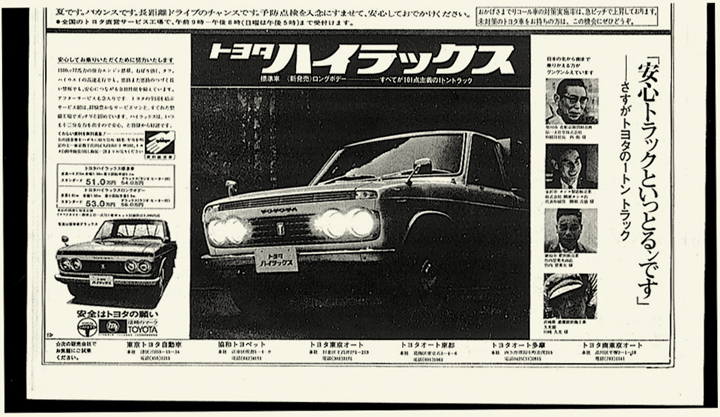Section 1. Response to Recall Problems
Item 2. A Swift Response
In June 1969, when the automotive industry was beginning to face strict public scrutiny, Toyota Motor Co., Ltd. President Eiji Toyoda delivered a speech to the company titled, "To All Toyota Employees: Take a Valuable Lesson from the Recall Problems." In it, he called on employees to revisit Toyota's basic philosophy on quality and think hard about how to derive valuable lessons from the recall problems. The president's speech was published in a company newsletter the following month.
I apologize for the intense concern the recall problems have caused all of you, our hardworking employees.
I will not delve into what the media is saying, or our own account of the matter, as you already know those details fully well. However, there are two key points I would like to reiterate. The first is that we have adhered to the founding philosophy of Toyota to make cars available for everyone, and to this day put the customer first in all things. And the second is that we have worked day and night to deliver ever-higher quality and ever-lower prices in accordance with our motto, 'Good Thinking, Good Products'.
Toyota's technologies have grown to the point where they now surpass global standards. This is stunning progress when you consider how we started. I am not saying, however, that we should be complacent. Cars are used today by countless people in a myriad of environments, and we must endeavor to create even safer, more complete cars.
In that sense, the recent recall problems can be considered a valuable lesson. I would like everyone to think seriously about how to address these problems and how we can benefit from them.
I want everyone to make the most of this valuable experience in their own position and capacity. That is to say, I want managers to take full consideration of quality cost, supervisors to once again review key aspects of work tasks, and individual employees to be aware of the fact that your work is closely connected to the world. With great courage and confidence and the carefulness required to leave not a single screw untightened, I want us all to move forward and aspire to become 'Global Toyota'.
Toyota Shimbun (an in-house Japanese-language publication), No. 814 (July 5, 1969)
Executive Vice President Shoichi Saito, chairman of a newly established special recall committee1, issued "Special Instructions on Automotive Safety" on June 17. The instructions were extensive, encompassing everything from the verification of information from the marketplace and checks for irregularities in production processes to process control and strict inspections, and also included the creation and implementation of plans for necessary safety measures. From late June to early July, all Toyota-related entities, including suppliers, performed comprehensive inspections.
Based on the results of the inspections, Toyota expanded its definition of safety-related parts2, and implemented safety measures in each department. The Engineering Group decided to mark drawings of all safety-related parts with an "S" and to put special priority in making sure quality was in place. It also sought to further improve its reliability testing by developing design standards for safety-related parts and by expanding its test facilities.
In production preparation, the capabilities within each process were reinforced and poka-yoke3 (mistake-proofing) measures were implemented wherever possible. The production divisions designated certain processes as critical to safety, adopted a worker registration system, developed work and other quality standards and launched an initiative to eliminate defects. The Purchasing Group inspected processes critical to safety at suppliers and increased its guidance of secondary suppliers.



